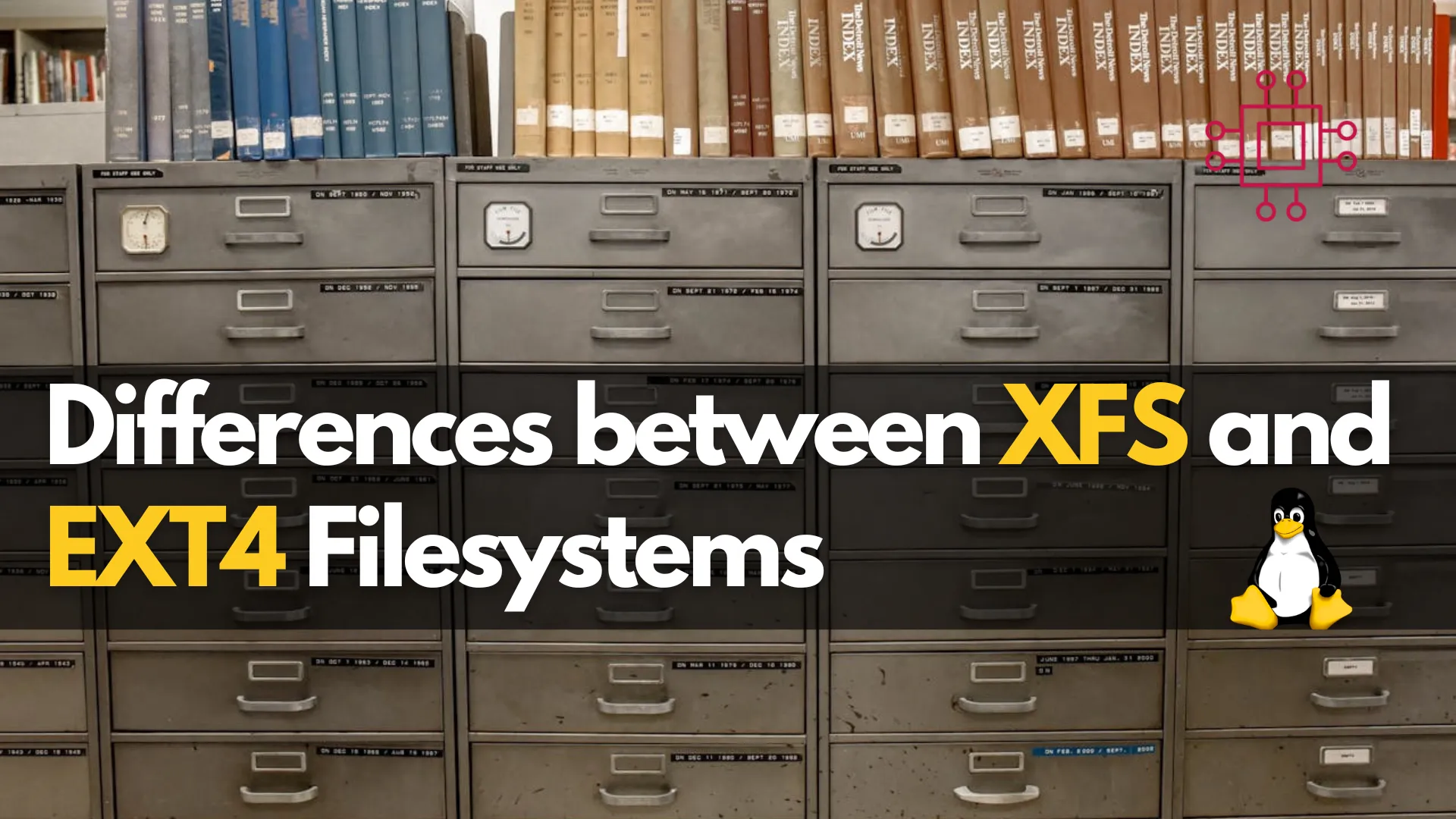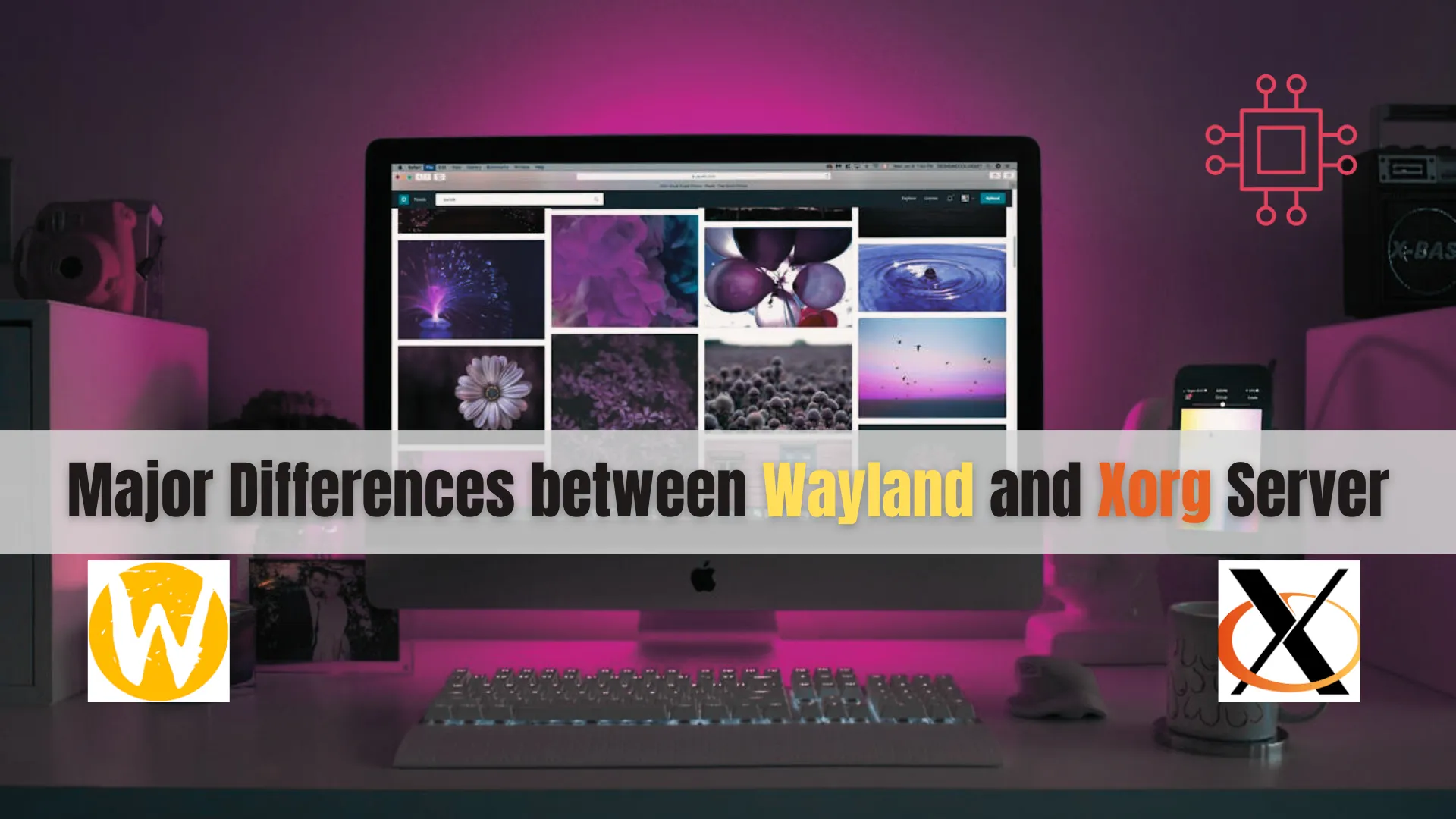
Discover the differences between XFS and EXT4 filesystems in our comprehensive blog post. Learn about performance, scalability, reliability, and more to make an informed decision

Discover the major differences between Wayland and Xorg Server in this comprehensive guide. Learn about their architecture, performance, security, compatibility, and more to make an informed choice for your Linux graphical environment.
As the landscape of graphical servers evolves, two major players—Wayland and Xorg—dominate the scene. Understanding the distinctions between these two can significantly impact the choice for developers and users alike. This comprehensive guide delves into the major differences between Wayland and Xorg, aiming to provide clarity on which might be the better fit for your needs.
Introduction to Wayland and Xorg |
Before diving into the differences, it’s essential to grasp what Wayland and Xorg are. Xorg, or X.Org Server, has been the backbone of Linux graphical systems for decades. It is an implementation of the X Window System, providing the basic framework for a GUI environment. Wayland, on the other hand, is a newer protocol intended as a replacement for the X Window System, offering a modern approach to handling graphical interfaces.

Photo by Joao Jesus from Pexels
Architectural Differences |
One of the primary differences between Wayland and Xorg lies in their architecture. Xorg uses a client-server model where the X server manages input devices and display outputs, while clients (applications) communicate with the server to render their graphics. This architecture, while flexible, introduces latency and complexity.
Conversely, Wayland simplifies this by integrating the display server and the compositor. This means that Wayland compositors handle both the display server and window management, reducing overhead and potential points of failure.
| Feature | Xorg | Wayland |
|---|---|---|
| Model | Client-Server | Integrated Display Server |
| Compositing | External (e.g., Compiz) | Internal |
| Latency | Higher due to inter-process communication | Lower due to direct rendering |
Performance and Efficiency |
Performance is a critical factor for many users. Xorg’s architecture, while versatile, can lead to inefficiencies. The need for communication between the client and server can introduce noticeable latency, especially in graphics-intensive applications.
Wayland’s design aims to enhance performance by minimizing these interactions. By allowing direct rendering and handling compositing internally, Wayland can offer smoother animations and quicker response times. This efficiency makes Wayland particularly appealing for modern, resource-intensive applications.
Security Enhancements |
Security is another area where Wayland has an edge. Xorg’s design inherently allows any client to capture input events and manipulate the screen, leading to potential security risks. Applications can eavesdrop on input events, posing a significant security concern.
Wayland addresses this by isolating clients more effectively. Each client communicates directly with the compositor, which has greater control over what information gets shared. This reduces the attack surface and enhances overall system security.
Compatibility and Support |
Despite its advantages, Wayland’s adoption has been gradual, primarily due to compatibility issues. Xorg has been the standard for so long that many applications and drivers are tailored specifically for it. Transitioning to Wayland requires significant effort from developers to ensure compatibility.
However, this landscape is changing. Major desktop environments like GNOME and KDE are increasingly offering robust Wayland support. Additionally, many popular applications are now being developed with Wayland in mind, improving its viability as a long-term solution.
Gaming on Wayland vs. Xorg |
Gaming performance can highlight the practical differences between Wayland and Xorg. On Xorg, games may suffer from input lag and tearing due to the overhead introduced by the client-server model. Wayland, with its direct rendering capabilities, often provides a smoother gaming experience with reduced input lag and better frame rates.
| Metric | Xorg | Wayland |
|---|---|---|
| Input Lag | Higher | Lower |
| Frame Rates | Variable, often lower | More stable, generally higher |
| Screen Tearing | Common without additional tweaks | Rare due to built-in compositing |
Ease of Use and Configuration |
From a user perspective, ease of configuration can be a decisive factor. Xorg offers extensive customization options through its configuration files, allowing users to fine-tune their setup. However, this flexibility can also lead to complexity and potential misconfigurations.
Wayland, designed for simplicity, typically requires less manual configuration. It aims for sensible defaults and minimal user intervention, making it more user-friendly, especially for those less inclined to tweak settings manually.
Transition Words and Flow |
To ensure this blog post ranks high on search engines, we’ve incorporated transition words to enhance readability. Transition words such as “conversely,” “however,” and “additionally” help guide readers through the content smoothly, ensuring a coherent flow of information.
Future Prospects |
Looking ahead, the future of graphical servers on Linux seems to be leaning towards Wayland. As more developers and organizations invest in improving Wayland support, its advantages will likely become more pronounced. Xorg, while still reliable, might eventually phase out as the community shifts towards a more modern and efficient solution.
Both Wayland and Xorg have their strengths and weaknesses. Xorg’s extensive compatibility and customization options make it a robust choice for many users. However, Wayland’s performance improvements, enhanced security, and streamlined architecture position it as the future of Linux graphical systems. Depending on your specific needs—whether it’s gaming, general desktop use, or application development—one may suit you better than the other.
As the technology landscape evolves, keeping an eye on developments in both Wayland and Xorg will ensure you make informed decisions for your graphical environment.
By understanding the major differences between Wayland and Xorg, users and developers can better navigate the complexities of graphical server choices. While the transition from Xorg to Wayland may involve some hurdles, the potential benefits in performance, security, and simplicity make it a worthy consideration.
Did you find this article useful? Your feedback is invaluable to us! Please feel free to share your thoughts in the comments section below.
Related Posts

Discover the differences between XFS and EXT4 filesystems in our comprehensive blog post. Learn about performance, scalability, reliability, and more to make an informed decision

In this blog post, we’ll explore the 10 major differences between Ubuntu 20.04 and its latest iteration, Ubuntu 22.04, shedding light on the advancements that await

This detailed comparison covers key differences between Sendmail and Postfix, providing insights to help you choose the right MTA for your needs. Table of Contents
